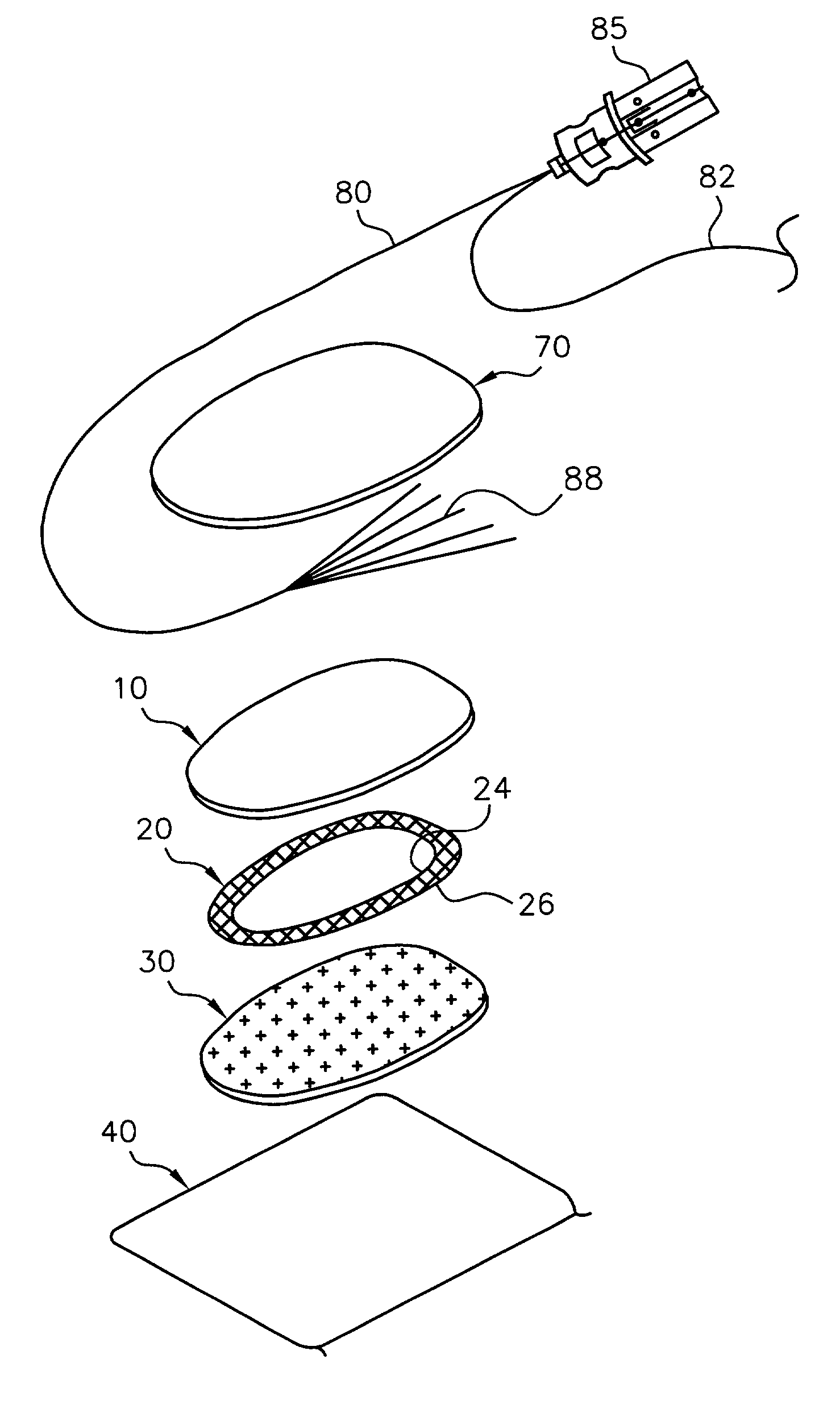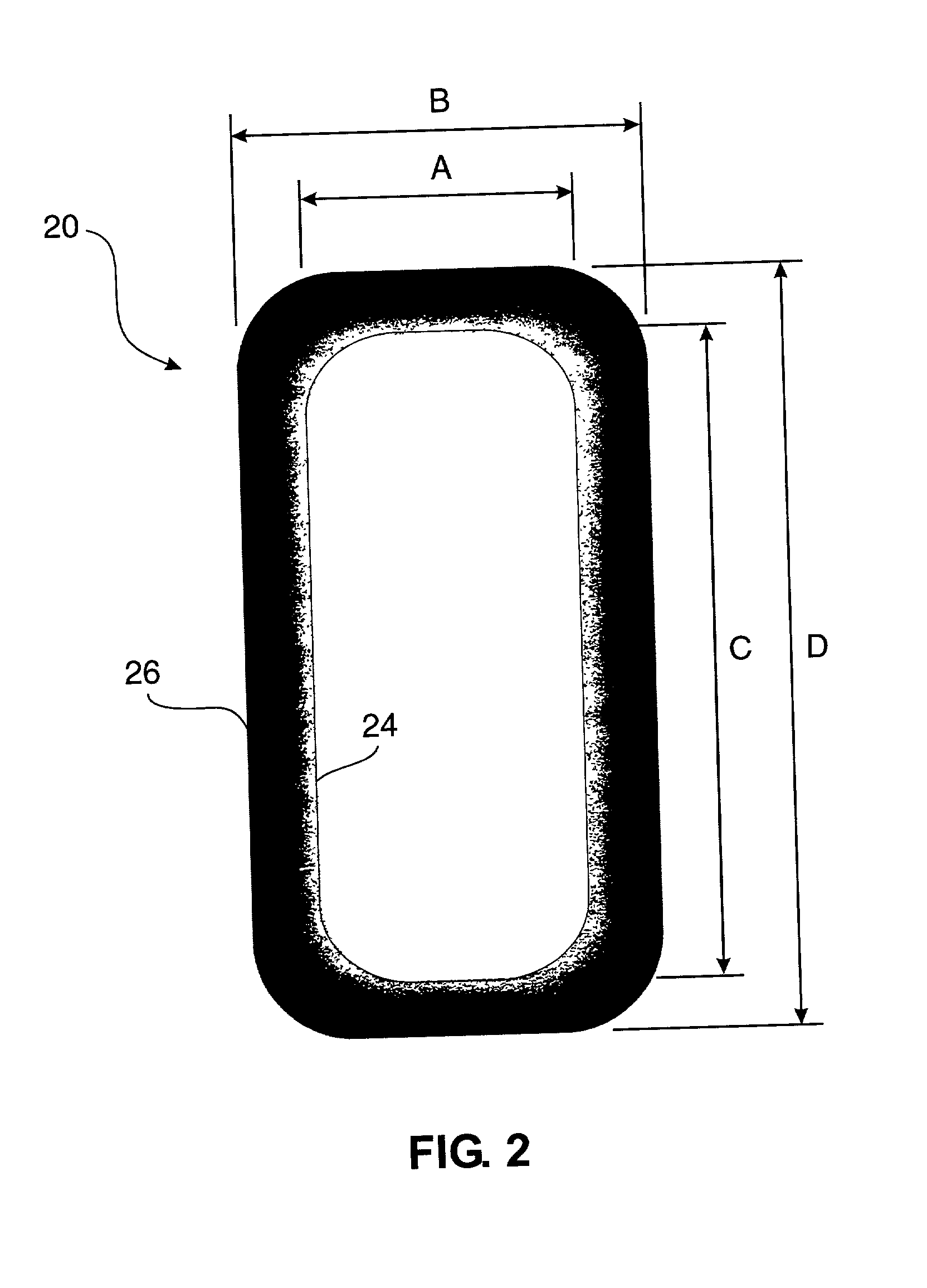High-energy disposable medical stimulation electrode
a technology of electrodes and electrodes, which is applied in the field of medical electrodes, can solve the problems of not being able to conduct and distribute the high level of energy required, not being able to meet all defibrillation standards, and the stimulation electrodes disclosed are not capable of meeting the requirements of defibrillation standards, etc., to achieve efficient delivery of energy without burning the patient's skin, conduct energy sufficient for defibrillation, and improve current density distribution
- Summary
- Abstract
- Description
- Claims
- Application Information
AI Technical Summary
Benefits of technology
Problems solved by technology
Method used
Image
Examples
first embodiment
[0051] B. First Embodiment of the Present Invention
[0052] As illustrated in FIG. 1, the electrode construction according to the present invention has a release carrier sheet 40. The release carrier sheet 40 may be made, for example, of silicone-coated PET. Although not required, a rectangular shape is suitable for the release carrier sheet 40. If rectangular as illustrated, dimensions such as a length of about 140 mm and a width of about 82 mm are suitable.
[0053] An oval-shaped foam barrier 34, having a substantially constant width of about 5 mm and a thickness of about 1 mm, is disposed on, and adjacent the edges of, the release carrier sheet 40. The foam barrier 34 defines a central opening approximately 65 mm wide and 122 mm long, in which is disposed and retained the gel pad 30. An adhesive may be provided on the patient-facing side of the foam barrier 34 to releasably affix the electrode to the skin of the patient.
[0054] The cover sheet 70, a continuous foam backing sheet witho...
second embodiment
[0072] C. Second Embodiment of the Present Invention
[0073] Illustrated in FIG. 4 is a second, preferred embodiment of the electrode construction according to the present invention. The embodiment illustrated in FIG. 4 is similar in many respects to, although certain features are not shared with, the first embodiment illustrated in FIG. 1. With reference to FIG. 4, the electrode construction of the second embodiment has a release carrier sheet 40. Like the first embodiment, the release carrier sheet 40 may be made of silicone-coated PET and, although not required, have a rectangular shape. If rectangular as illustrated, dimensions such as a length of about 165 mm and a width of about 135 mm are suitable.
[0074] Unlike the first embodiment, the cover sheet 70 of the electrode construction of the second embodiment has a pear-shaped configuration. The cover sheet 70 is a continuous foam backing sheet without any openings and having a thickness of about 1 mm, a major axis of about 156 mm,...
PUM
 Login to View More
Login to View More Abstract
Description
Claims
Application Information
 Login to View More
Login to View More - R&D
- Intellectual Property
- Life Sciences
- Materials
- Tech Scout
- Unparalleled Data Quality
- Higher Quality Content
- 60% Fewer Hallucinations
Browse by: Latest US Patents, China's latest patents, Technical Efficacy Thesaurus, Application Domain, Technology Topic, Popular Technical Reports.
© 2025 PatSnap. All rights reserved.Legal|Privacy policy|Modern Slavery Act Transparency Statement|Sitemap|About US| Contact US: help@patsnap.com



